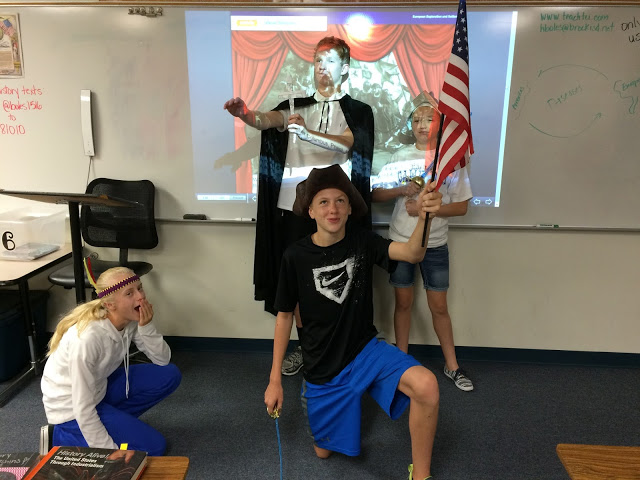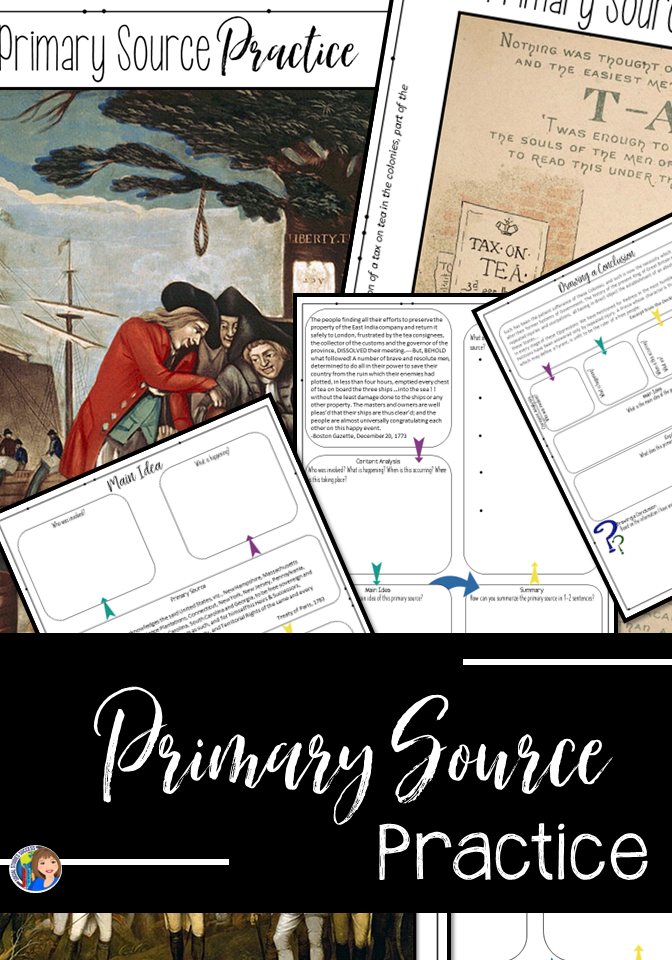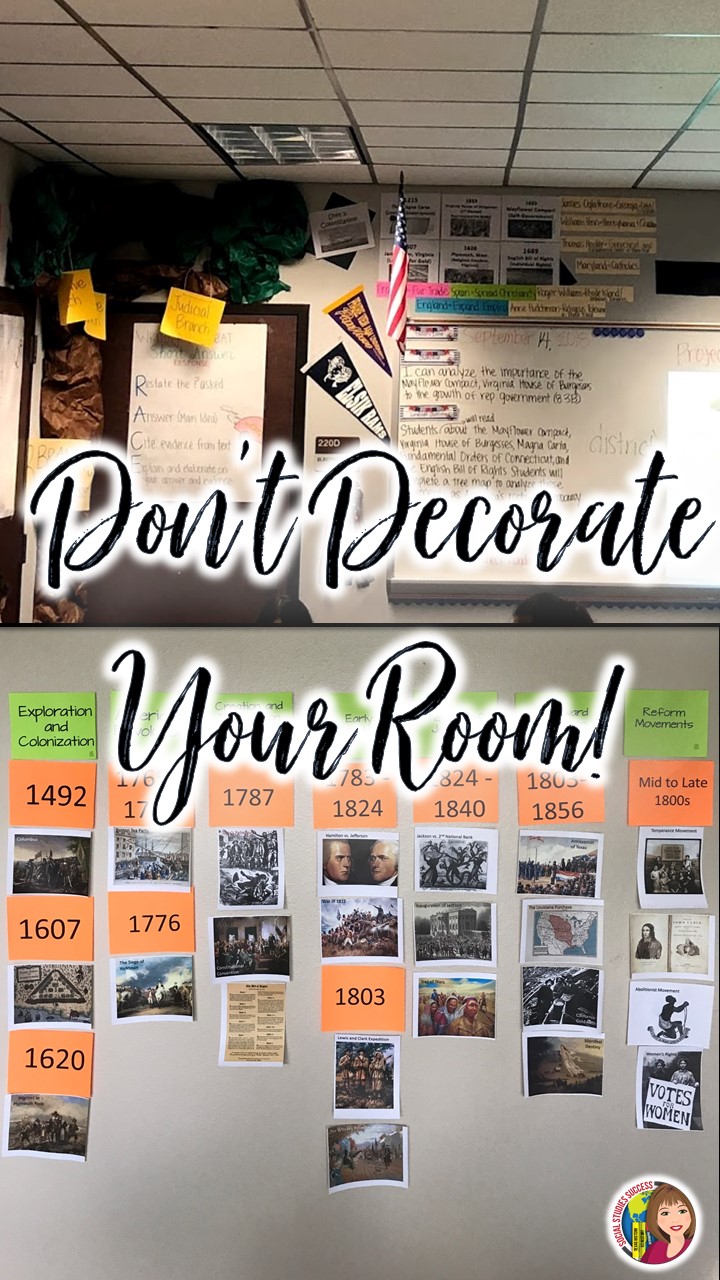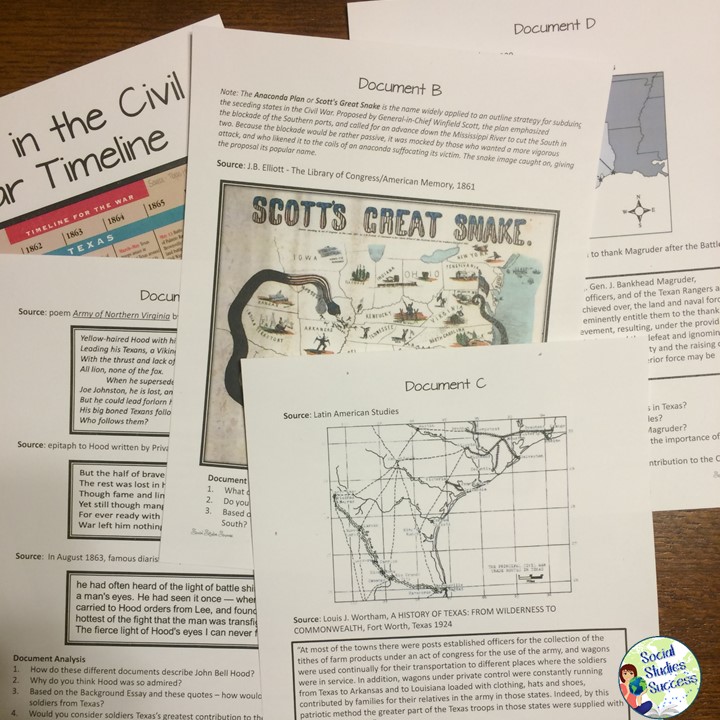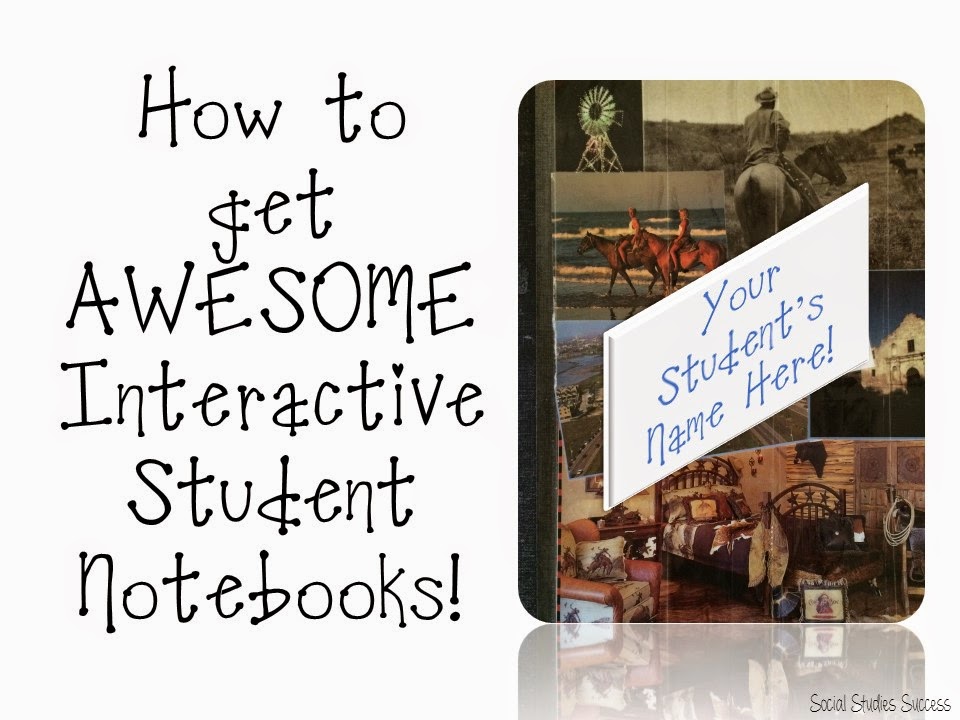One of my favorite teaching strategies is a Visual Discovery – part of which is due to the excitement students find in conducting an act-it-out! I am fortunate enough to have Heidi Boles guest post for me with a photo, video and a description of conducting an act-it-out in her 8th grade US History class.
“As a part of our study of European Exploration and Settlements, my class participated in an act-it-out.
We began by dissecting an image of Christopher Columbus claiming San Salvador. Students pointed out details in the image and made predictions about the history of the event based on the clues found in those details.
After dissecting the image, we wanted to learn more, so we turned to our textbooks and read about Columbus and his adventures. We found out that he wasn’t looking for North America at all! He was really searching for a faster route to Asia…but stumbled upon the New World by accident. Columbus never knew about his amazing discovery. Until the day he died, he believed what he had found was eastern Asia. Wow!
Check out the video and pictures of us! Learning history can be fun when you make it come alive!”
In addition to the “Roving Reporter” method of act-it-outs, try these other styles from History Alive!
Scripted Act-It-Outs
· Scripted act-it-outs work well at the beginning of the year as you introduce the activity to your students. The first few times you may want to hand pick the actors.
· Prepare a simple script that each actor can read to bring the image to life. You may want to include blank space or lines in the scripts where actors must insert appropriate information from the reading and their notes.
Act-It-Outs with Role Cards
· As you students have experienced success with scripted act-it-outs, you may move on to role cards for the actors. You may want to continue hand picking actors then start taking volunteers.
· The role card tells the actor a name and a brief explanation of who the character is. The card should provide some cues to help the actors prepare for their roles and accurately represent their characters. Provide the actors with the role cards when you begin the visual discovery and before the related reading so students can be thinking in terms of their characters.
Talking Statues Act-It-Outs
· Talking statues works well for images with a large number of characters or especially poignant moments in time. Images with non-talking characters lend themselves to talking statues.
· Tell the students to imagine what their character is thinking or feeling at that moment and “freeze” into position. One by one, touch each actor on the shoulder to bring them to life. The statue can say its part then freeze back into position.
Group Presentation Act-It-Outs
· Work well when you have multiple images for a lesson and you want every student to have the opportunity to be in an act-it-out.
· Put the students in small groups and assign each group a character in the image. The number of students in each group is dictated by the number of images. Provide them with a set of questions everyone should be able to answer from the perspective of their character. Allow the groups time to prepare, then chose an actor or take a volunteer from each group. You assume the role of an on-scene reporter and interview the characters.
Impromptu Act-It-Outs
· As you students become “old hands” and confident with act-it-outs, the impromptu style allows the students to spontaneously interact with the image in a less structured format.
· After the class has analyzed a dramatic image, allow volunteers to step into the image with their notes, if necessary. You or a student will assume the role of on-scene reporter and interview the characters.
· If the scene can be “read” easily, have volunteers step into the image before the related reading to further pique student interest.
I have many different lessons using act-it-outs. You can find them in my Conquistador activity, or easily add them to my lesson on the French Revolution or the Mexican American War.
Enjoy!

